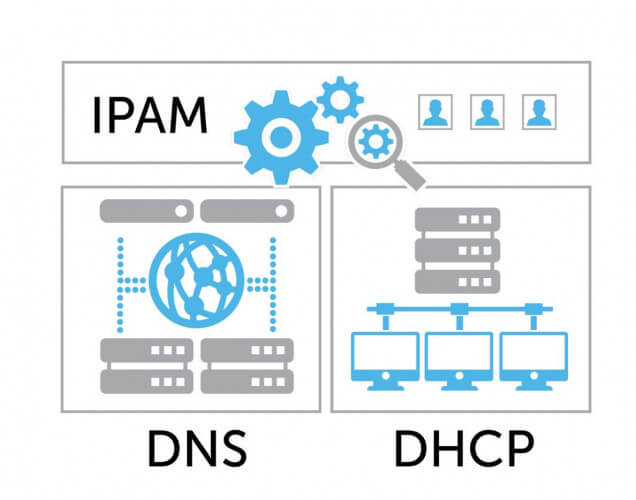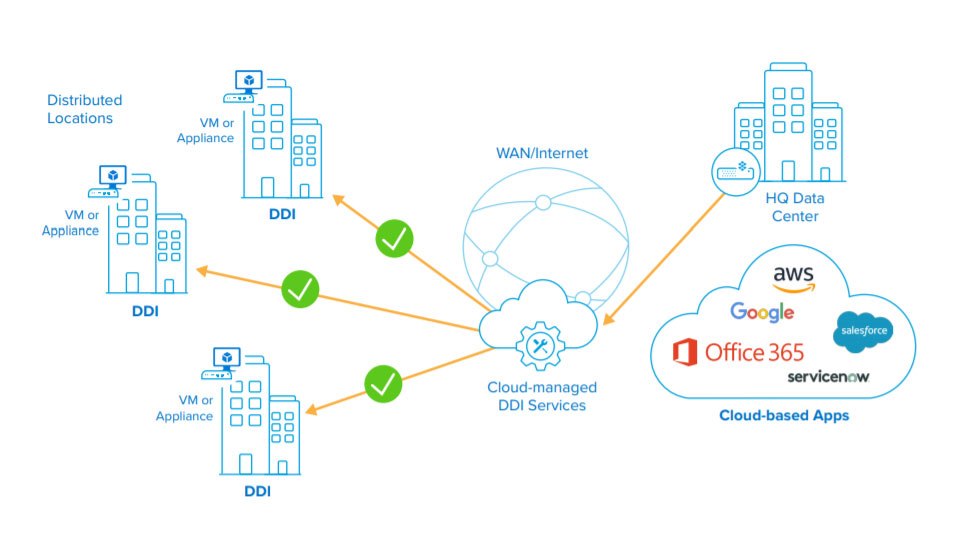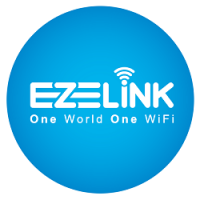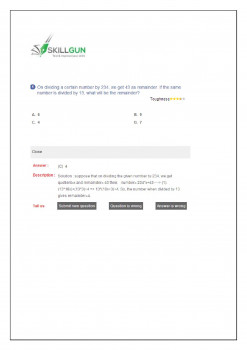Smart DDI (DNS, DHCP, IPAM) Solution - Pdf Slider

Today we start our journey by discussing IP addresses, what they are and why we use them. We will then introduce the DHCP system, how it works and what are its various components. After that, we will discuss the interaction between DNS and DHCP and why it is so important. And we’ll end this article by explaining what DDI is and why it’s so important. And after we’ve finished learning all the basics, we’ll move on to reviewing the multiple versions of EZELINK DDI/IPAM solutions for various industries.
IP addresses are at the very center of the Internet. They uniquely identify each device connected to the network. There is an important distinction to be made between public IP addresses and private IP addresses. The former are those used on devices connected to the public internet. For example, a web server often has a public IP address. The Internet router installed by your ISP in your home also has a public IP address. On the other hand, private IP addresses are the ones we use in the home and corporate networks. They must also be unique, but only within a particular network.
Back in the prehistory of the Internet, when the IP protocol was defined, each connected device was manually configured with a separate IP address. We called it a static or fixed IP address. It was cumbersome but ok since the number of connected hosts was low. As networks (both public and private) grew, it became increasingly difficult to manually configure IP addresses, as the process was error-prone and often resulted in duplicate IP addresses on the network. It took until the early 1990s before a durable solution was introduced in the form of DHCP.
DHCP
The Dynamic Host Configuration Protocol – or DHCP as we commonly call it – was invented to dynamically assign IP addresses and allow connected hosts to connect. DHCP eliminates the need to manually configure IP addresses. DHCP not only configures IP addresses, but it can also configure most of the connected host’s network settings, such as IP address, subnet mask, name servers, and WIND server(s) in the Windows environment, and a few other settings. All parameters are dynamically configured each time the host is started on the network.
No matter what exact parameters are configured by DHCP, the host configuration process is always the same. This is a four-step process called DORA which stands for Discovery, Request, Offer, and Acknowledgment. Here’s what happens when the host starts.
During the discovery phase, the host sends a broadcast message – this is a message that will be received by any host connected to a network called DHCP DISCOVERY. The message must be transmitted because the host does not currently know the address of the DHCP server.
In the second step, the server responds with a DHCP offer. The offer contains all the host network interface configuration options. Now, this is where things get a little more complicated. Because there can be multiple DHCP servers on a network, a host can receive multiple offers. When this happens, the host will simply select one of the offers and move on to the next step. Which one to choose? He usually chooses the first offer he gets.
In the next step, the host sends a DHCP request. It turns on the offer it chooses and will instruct the server whose offer it decides to proceed with, telling other servers that sent offers they had rejected and that they can release the offered IP addresses.
In the final step, the server sends a DHCP acknowledgment to the host confirming that it has correctly reserved the proposed IP address for that host.
DHCP Client Component
The DHCP configuration information received by the client and used to configure the network interface is invalid forever. In fact, it is leased, not assigned, by the DHCP server. And that lease expires.
It is one of the most important tasks of a DHCP client to ensure that the interface configuration remains valid. It does this by periodically trying to renew the lease before it expires. The update process uses the same DORA sequence. The only difference is that during the discovery phase, the client requests the same IP address that it already has.
Another important function of the DHCP client is the release mechanism. Whenever the client no longer claims its IP address, as it can when it terminates, it will notify the DHCP server to release the IP address so that it can be reused by the server.
DHCP Server Component
As far as a DHCP server is concerned, its main job is to send configuration information to any host that requests it and have it send unique options to each individual host. IP addresses can be assigned by a DHCP server in one of three ways: dynamic, automatic, or static.
Dynamic allocation assigns a new IP address to each IP address. Automatic allocation is similar, except that the server will keep track of what IP address was assigned to each host and will try to assign it the same address the next time it connects.
And finally, with manual allocation, the administrator must manually associate a specific host, identified by its MAC address, with a specific IP address. This is also called a DHCP reservation because it reserves a specific address for a specific host.
Interaction between DHCP and DNS
The Domain Name Service – or DNS – is used to map hostnames to IP addresses. In a private network using dynamic DHCP allocation, there is often some integration between DNS and DHCP. So DNS always knows the current IP address of each host.
This is why many DHCP servers also include a DNS server. This applies, for example, to the Microsoft DHCP server, which is fully integrated with the DNS server.
DDI (DNS, DHCP, IPAM)
DDI is an acronym for DHCP, DNS, and IPAM or IP address management. While we have not yet discussed the matter. IPAM refers to any software used to manage IP addresses. Such systems can typically be used to manage both DHCP-assigned addresses and statically-assigned addresses that are manually configured on hosts.
With the tight integration that is required between the three, it is quite normal that many vendors have three products built into each other, or that they offer all three products separately.
EZELINK 5 versions of DDI/IPAM Systems
Every DDI Solution of EZELINK can be used with all 3 features (DNS, DHCP, IPAM) or as an individual product model (EZE-DNS, EZE-DHCP, and EZE-IPAM) in a standalone and can be integrated with many popular DNS and DCHP servers, such as the ones we find on Windows and Linux.
EZELINK Platinum Network DDI
EZELINK Platinum DDI is one of the best in network management. The product consists of some of the best tools for helping administrators. It allows you to use built-in DHCP and DNS servers making it a complete DDI system, and the software can also communicate with DHCP and DNS servers from Microsoft and Cisco so you don’t have to replace all your infrastructures.
The software allows you to use several distribution methods for IP addresses. For example, you can use reservations for servers and other equipment and dynamically allocate addresses for workstations. Everything is fully integrated into DNS. In addition, a configuration wizard is included to assist in configuring DHCP scopes.
EZELINK Platinum Network DDI uses user accounts with different access levels. You can grant only partial access to some junior administrators, or allow managers to view reports. There is also a good logging system that records all changes with a timestamp and the username of the operator who made the changes. This can help with compliance issues.
EZELINK Large Enterprise DDI
EZELINK Large Enterprise DDI is one of the industry leaders in this field. The address management is best suited for large corporations with a network management team. The IPAM system is actually a complete DDI system that includes DHCP and DNS. It can also communicate with DHCP and DNS servers from Microsoft.
It is a dual-stack system, which means it can work with both IPv4 and IPv6 at the same time. It’s really a great tool to use when moving from one to the other. From a security point of view, the system has workflows and approval schemes, as well as user accounts with hierarchical rights.
The system uses network templates. They allow the administrator to use information layouts that prevent important tasks from being overlooked and that all-important data is present. In a nutshell, the EZELINK Large Enterprise IPAM system automates as many network administration tasks as possible. As a result, problems caused by human error are less common. It is a premium package so you can expect premium prices, but if you manage a large network it’s worth the investment. You can visit our DDI Solution page for more information.
EZELINK Centralized DDI
EZELINK Centralized DDI is ideal for the management of the IP address space. It can handle both IPv4 and IPv6 addresses. The built-in IP manager software helps network administrators determine whether an IP address is currently available or not. The IP Address Manager tool periodically scans the subnets and updates the availability status of the IP addresses on each subnet.
Users can use the IP Address Manager tools to quickly and easily check if a particular IP address is reserved or available. The tool accepts multiple subnet inputs, which helps when scanning the entire network to get the status of all IP addresses.
Request for a free demo of the product limited to one subnet. It is enough to give the product a trial run. It might even be all you need if you run a smaller network. Visit the EZELINK website for more information.
EZELINK SME IPAM & DHCP
EZELINK SME IPAM & DHCP is better suited for small to medium networks. Like other SME systems, it has templates for automating routine tasks. It also comes with excellent standard reports. And if you don’t find existing templates or reports to your liking, you can customize them to your liking.
SME IPAM & DHCP allows managers to track key resource usage. It also has snoop features that help you manage your DHCP usage efficiently. Security-wise, this is great, as it also includes the ability to identify external addresses and isolate rogue devices. This is a pretty unique feature that you won’t find on other systems. It shows how EZELINK treats security like it does IPAM and has safeguards built into the system.
New nodes can be centrally integrated into the network through the DDI user interface, and per-node usage comparison is also simplified with efficient MAC address records as well as IP address tracking
EZELINK IP Manager
EZELINK IP Manager is a great DDI kit that is an automated Internet-based IPv4/IPv6 address management software (IPAM). It has powerful network discovery features and offers to search and filter functions for networks and hosts by resolving equivalent expressions in the Internet search engine. This allows you to find information that administrators often require easily and quickly.”
In concrete terms, it’s a great system, especially for small businesses that might not be able to afford large solutions like Centralized DDI and SME IPAM & DHCP. It includes all the features a network administrator could want at a minimal price. And it also has some unique features like a subnet calculator and IP address plan builder. This is definitely a package worth looking into.
Conclusion
EZELINK has a big range of multiple versions of the DDI platform suited to every organization as per their requirements and features. The above five are the ones we think will cover most of the industry business requirements for large and small networks. But if you feel you need a turnkey solution EZELINK R&D team can be a big help to deliver the customized solutions as per your requirements.
YOU MAY ALSO LIKE
How to Fix HP Laptop Black Screen problem?
How to Fix Your HP Laptop's Black Screen Issue Here are some tips and tricks and this tips will very helpful to you
BCA Course in Ranchi: Empowering Future Tech Innovators with Eimple Labs
Eimple Labs offers an exceptional BCA course in Ranchi. The institute's comprehensive curriculum, practical approach to learning, state-of-the-art infrastructure, and strong industry connections make it a preferred choice among aspiring technologists.
Proof of Concept (PoC) – An Overview
A PoC aims to determine that an idea of a project or future product is viable. This approach is often used in businesses to assess the feasibility of a project before proceeding with manufacturing.
Similar Links
Meta set to roll out NFT support on Instagram to 100 countries- Report
Meta also announced that the Coinbase Wallet and Dapper Wallet are now accepted as third-party wallet compatible for use. Instagram is also expanding its supported blockchains to include Flow.
7 Sure-Esteemhost web hosting Secrets That Work
When you are able to take your information into your own hands and run your own knowledge, photos, Video, and apps, it is time to search out an honest web host which will place it all on the online for you, offer you cpanel, advanced features, and un
The World`s Best reseller hosting You Can Actually Afford
Reseller hosting services an ideal resolution if you`d prefer to begin your own web hosting reseller company or if you`ve got multiple internet sites that you simply would really like to manage in one single web hosting reseller account. call us on t
Similar PDFs
Best Crypto Wallet: Jaxx Wallet and GateHub Wallet
A crypto wallet is essentially any application that incorporates features for storing and managing coins. A thorough explanation of how wallets function, as well as a review of the many types of crypto wallets and their applications. It's vital to remember that cryptocurrencies are stored on the blockchain, not in the wallet. A publicly viewable address is provided to each coin/token on the blockchain. Block explorers can be used to look at these addresses. Aside from privacy, coin records, transaction histories, and address balances are open to the public. A complicated mathematical method generates the public address from the private key. The process of producing a private key from a public key is nearly impossible to reverse. The coins are only accessible to the owner of the private key.
Quantitative Aptitude Questions
Quantitative Aptitude Questions and Answers contains concepts and test papers on many topics such as problem on trains, time and work, simple interest, compound interests, partnership, problem on ages, average, numbers, calendar, boats and streams, clock, height, and distance, percentage, pipes and cisterns, profit and loss, speed, time and distance, etc.
Online Assignment Help Edinburgh - A New Concept in Education
Online assignment help Edinburgh is an innovative concept that is specially developed for the help of students. With the help of the internet, you can make learning easy, solve problems, makes the assignment within the deadlines. For More info visit here: https://www.myassignmenthelpau.com/uk/assignment-help-edinburgh













